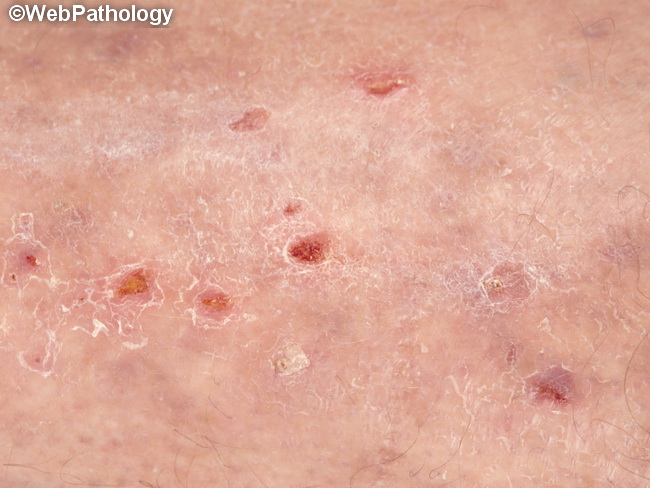Dermatitis Herpetiformis


Comments:
Dermatitis herpetiformis is an intensely pruritic eruption that is associated with gluten-sensitive enteropathy. It is most commonly seen in 3rd and 4th decades of life. The patients have antibodies to transglutaminases. The lesions cause intense pruritus, burning or stinging sensations in skin. They consist of erythematous papules, urticarial plaques, small firm-topped vesicles, and bullae. The lesions occur in groups and are symmetrically distributed on extensor areas (elbows, knees), buttocks, scapular, and sacral regions. They may also involve face and scalp. Scratching causes excoriations and crusting. Biopsies from early papular lesions show neutrophilic microabscesses at the tips of dermal papillae. There is dermal infiltration of neutrophils and eosinophils. Immunofluorescence studies show granular IgA deposits at the tips of papillae, as well as C3 and C5 components. The disease pursues a prolonged course and eventually may go into remission. Management includes dapsone, sulfapyridine, and a gluten-free diet.



